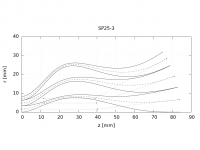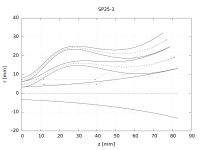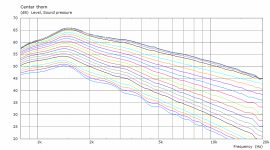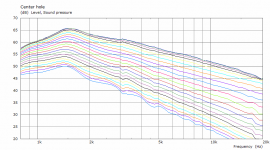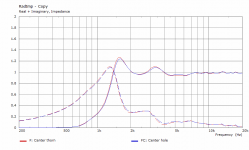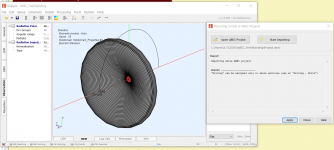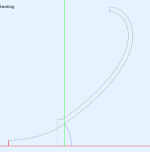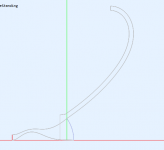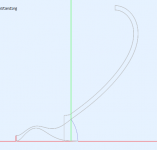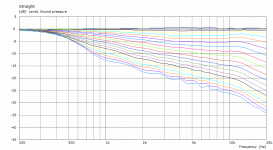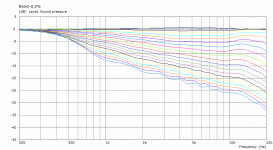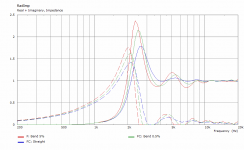That's not what happens - at high frequencies the acoustic load becomes more and more purely resistive, i.e. the energy radiated as sound is high. The "mass" part of the loading doesn't produce sound in a form of propagating waves - it only moves back and forth with (close to?) the source. Well at least that's my rather poor understanding. It's never a pure mass loading though, there's always some radiation as well.... higher up in frequency where the air wouldn't be just moving back and forward with the source.
Last edited:
A volume of air accelerated without compression - acoustic mass.
A volume of air compressed without acceleration - acoustic compliance.
A volume of air compressed without acceleration - acoustic compliance.
Why there's no mass loading in the plane wave tube? What does it take to make "acoustic mass"?
What does it take to make "acoustic mass"?
A rigid tube open at both ends, short enough (less than wavelength / 16) so that the air in it moves as a whole, without appreciable compression.
I may be wrong but I read it as "without moving the center of mass", which can be done.
OK - yes, I can see that.
//
Radiation mass is not very intuitive, but it acts like a mass of air that is attached to the source. It is not a mass that is constant, it varies with frequency, vanishing at VHF. A short tube is a good analogy as Mr. McBean has suggested. But why this mass goes away as the tube is lengthened is not at all obvious. As the length gets longer the peak in the mass reactance goes ever lower in frequency until at infinity it vanishes. True, but very counter to intuition.
What may not be widely known is that the real and imaginary parts of any radiation impedance are not independent, they are coupled by a transform. (I can't recall if it's Fourier or Hilbert, but there is a transform.) This means that as you increased the real part with your plug, the mass (imaginary) part is forced to increase as well.
What may not be widely known is that the real and imaginary parts of any radiation impedance are not independent, they are coupled by a transform. (I can't recall if it's Fourier or Hilbert, but there is a transform.) This means that as you increased the real part with your plug, the mass (imaginary) part is forced to increase as well.
Thanks for pointing that out, I already wondered about that several times.
- BTW, this is a comparison of the vanes with and without a center thorn. Almost no difference in the simulation.
- BTW, this is a comparison of the vanes with and without a center thorn. Almost no difference in the simulation.
Attachments
A recent update to Akabak BEM actually lets you calculate the acoustic mass at a position via a toggle on the RadImp observation. There’s an update to the help file accordingly too.
ABEC script compatibility is much better now too, most will import much better with only a complaint about the driving values as there is a difference there.
Compatibility
Most projects should come out as before and should also render the same results. Here and there, there might be hick-ups:
Observation and multiple scripts. At import multiple scripts are compiled to one single script. This may have implications on specifications of ABECs sections such as Driving_Values, Control_Field, Control_Spectra. These will be imported and applied. However only the first occurrence, all further sections will be ignored.
Compatibility
Most projects should come out as before and should also render the same results. Here and there, there might be hick-ups:
Observation and multiple scripts. At import multiple scripts are compiled to one single script. This may have implications on specifications of ABECs sections such as Driving_Values, Control_Field, Control_Spectra. These will be imported and applied. However only the first occurrence, all further sections will be ignored.
Attachments
Know you're all on another thing now, but here comes an oldschool question: Waveguide pattern is defined at -6 dB, usually. I was working on a 10-inch waveguide, 50 degrees pattern and thinking: shouldn't I better tilt the -3 dB index a bit, to have a straight pattern - 6dB? (already taken into account that I will have to attenuate direct sound for this to not sound bright)
260 diameter, 66 mm length
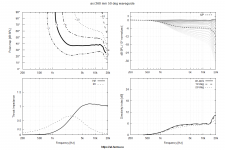
Just to check the pattern tendency in lower frequencies, I blew the waveguide up to counter the virtual widening due to the infinite baffle in Ath/Abec (settings same, but 200 mm length)
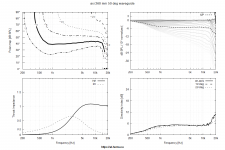
260 diameter, 66 mm length

Just to check the pattern tendency in lower frequencies, I blew the waveguide up to counter the virtual widening due to the infinite baffle in Ath/Abec (settings same, but 200 mm length)

This question already arose several times, with no definitive answer. I don't know, try it. With the on-axis/direct sound flat, perhaps I would let the power response tilted down a bit (by a similar amount you would have to tilt it now).... shouldn't I better tilt the -3 dB index a bit, to have a straight pattern - 6dB? (already taken into account that I will have to attenuate direct sound for this to not sound bright)
Last edited:
A small analysis of the channel bending effect -
Plug throat diameter: 10 mm
Plug length: 50 mm
Plug exit diameter: 40 mm
In all the following cases, input and output areas are the same, as it the nominal expansion rate.
Polars normalized to 10 deg.
1) A "straight" channel (the blue arc is the interface between the plug and the WG):
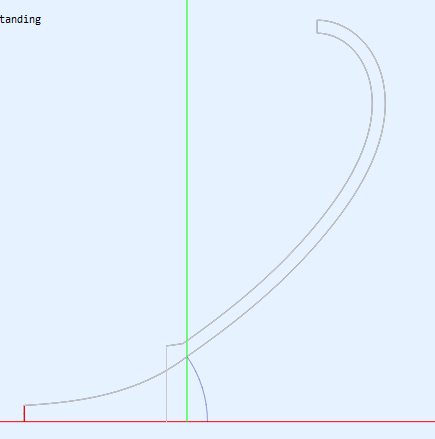
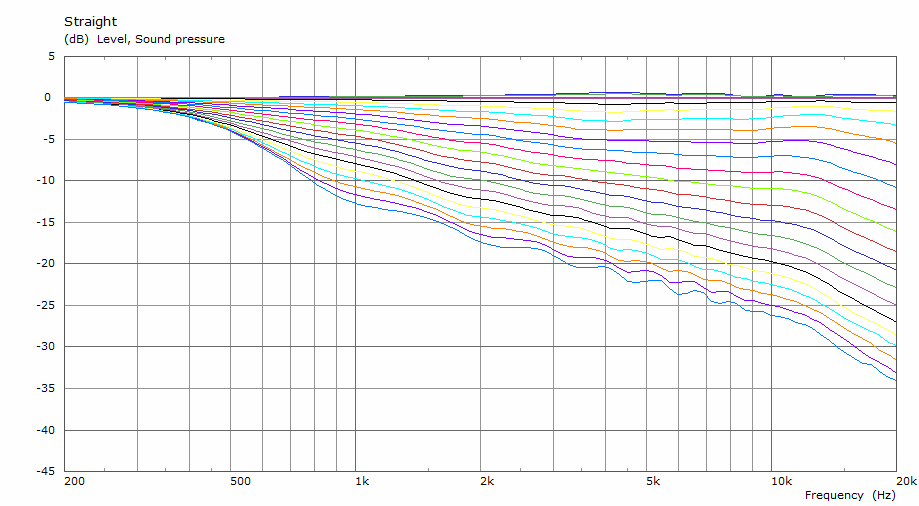
2) Bended less (0.5% of the straight length added):
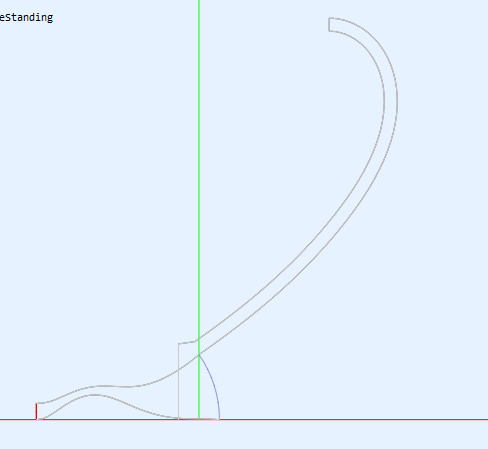
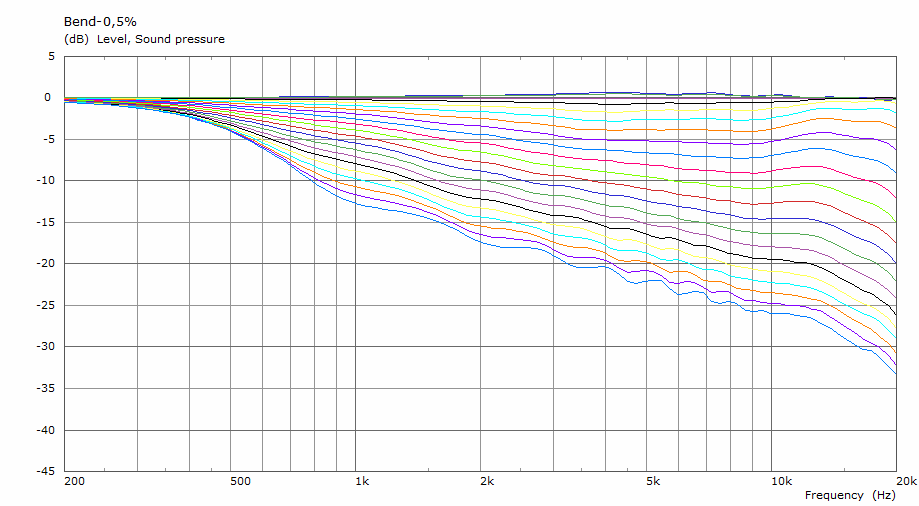
3) Bended more (5% of the straight length added):
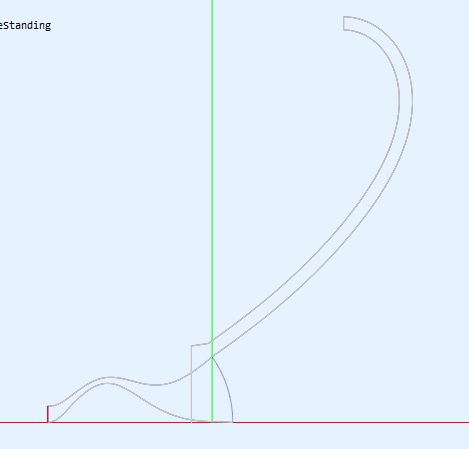
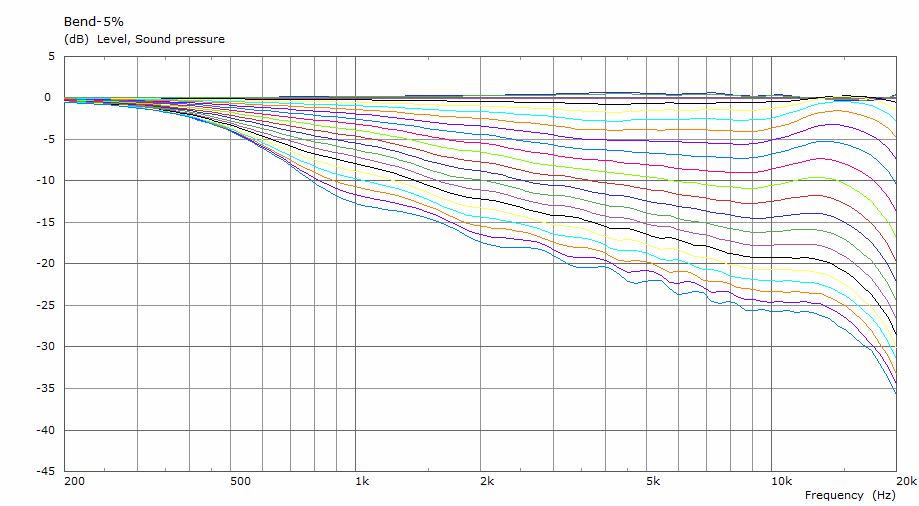
Throat impedances:
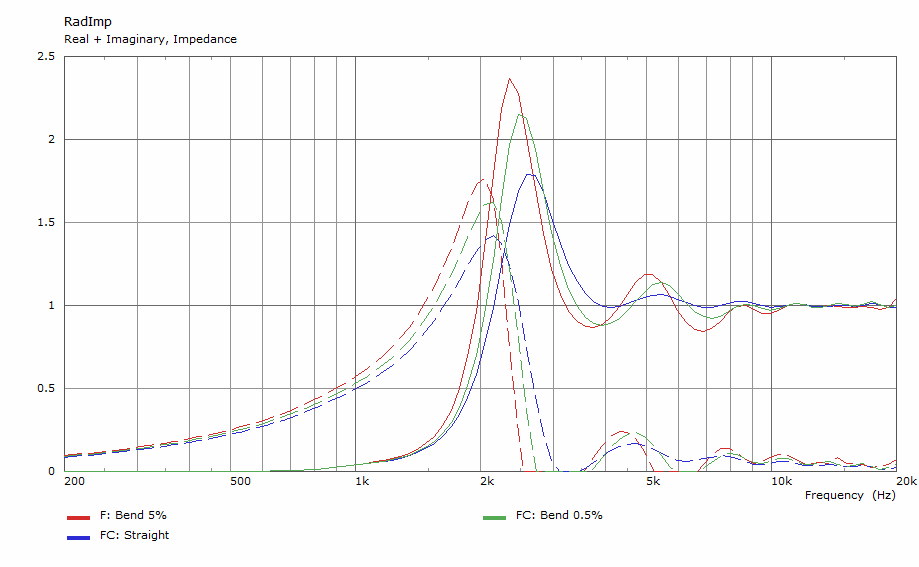
Plug throat diameter: 10 mm
Plug length: 50 mm
Plug exit diameter: 40 mm
In all the following cases, input and output areas are the same, as it the nominal expansion rate.
Polars normalized to 10 deg.
1) A "straight" channel (the blue arc is the interface between the plug and the WG):
2) Bended less (0.5% of the straight length added):
3) Bended more (5% of the straight length added):
Throat impedances:
Attachments
Has anyone run into this error?
C:\Users\xxxx\Downloads\Ath-4.7.1>ath.exe demos\dec7.cfg -r
Ath 4.7.1 beta4 32bit
--------------------------------------------------
Freeware version for personal non-commercial use
--------------------------------------------------
-destination directory: output\demos\dec7
-reading BEM results
-writing report
"C:\Users\xxxx\Downloads\Ath-4.7.1\lib\scripts\report2.gpl" line 67: warning: Cannot find or open file "DI.txt"
"C:\Users\xxxx\Downloads\Ath-4.7.1\lib\scripts\report2.gpl" line 67: warning: Cannot find or open file "DI.txt"
"C:\Users\xxxx\Downloads\Ath-4.7.1\lib\scripts\report2.gpl" line 67: warning: Cannot find or open file "DI.txt"
"C:\Users\xxxx\Downloads\Ath-4.7.1\lib\scripts\report2.gpl" line 67: No data in plot
From what I can see, the error is caused because Abec isn't generating a file named "di.txt" when I select "Spectra - export data as text" from Abec. The other files ARE generated, but not "di.txt"
C:\Users\xxxx\Downloads\Ath-4.7.1>ath.exe demos\dec7.cfg -r
Ath 4.7.1 beta4 32bit
--------------------------------------------------
Freeware version for personal non-commercial use
--------------------------------------------------
-destination directory: output\demos\dec7
-reading BEM results
-writing report
"C:\Users\xxxx\Downloads\Ath-4.7.1\lib\scripts\report2.gpl" line 67: warning: Cannot find or open file "DI.txt"
"C:\Users\xxxx\Downloads\Ath-4.7.1\lib\scripts\report2.gpl" line 67: warning: Cannot find or open file "DI.txt"
"C:\Users\xxxx\Downloads\Ath-4.7.1\lib\scripts\report2.gpl" line 67: warning: Cannot find or open file "DI.txt"
"C:\Users\xxxx\Downloads\Ath-4.7.1\lib\scripts\report2.gpl" line 67: No data in plot
From what I can see, the error is caused because Abec isn't generating a file named "di.txt" when I select "Spectra - export data as text" from Abec. The other files ARE generated, but not "di.txt"
Seems to be the same problem as the graphs not having the correct names for the reports to find them
Acoustic Horn Design – The Easy Way (Ath4)
Acoustic Horn Design – The Easy Way (Ath4)
Also, camplo did advice on 'poly modified thinset mortar' for molds, does someone have European tradenames at hand for this magic powder? Couldn't really indentify the proper product on German markets ...
I found a brand called Kiesel that has a number of polymer modified thinset mortar products listed. I imagine the "flexible" mortars are all polymer modified, but I didn't look at all of them (the ServoStar 3000 Flex, Servolight S2, and Servoflex-Trio-SuperTec are acrylic polymer modified according to the English product pages).
I've not tried what camplo suggested yet, so I don't know which products might work best.
- Home
- Loudspeakers
- Multi-Way
- Acoustic Horn Design – The Easy Way (Ath4)
